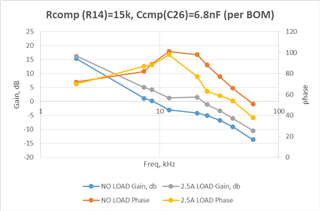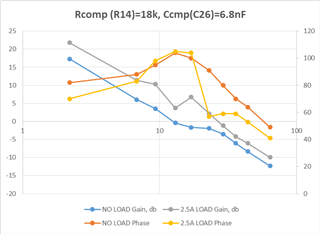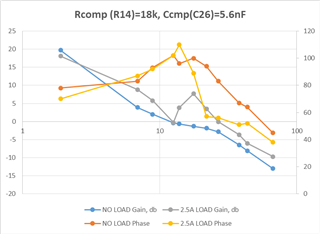Tool/software:
Hi,
I am using a TPS61178 to provide 13V to 17V boost, Iout~2.5 Amps. At light load the supply is stable, but at 2.5 amps the behavior is eradicate, sometimes stable other times the inductor squeals and the output voltage is only 15V.
The design was based off the datasheet example since the input/output parameters are similar to application.
Datasheet for TPS61178 provides reference design for Vin 6-14V, Vout=16V, Iout=3A, F=300 kHz. The schematic on pg16 Figure 22, shows the recommended component values.
L=1.8 uH, Cc=6.8 nF, Rc=15k, Cp=10pF. F=500kHz. A table of inductor choices ranging from 1.8 uH to 10 uH is also provided.
The topic design uses nearly identical to the datasheet example:
L=4.7 uH, Cc=6.8 nF, Rc=15k, Cp=N/A. F~480 kHz. Note Cp is not included.
Using webbench (6-14V input, 3A@16V output), recommends component values:
L1=2uH, Cc=180 pF, Rc=249k, Cp=N/A
I am going to add the Cp=10pF and re-evaluate the circuit behavior. But in the meanwhile, any comments on why webbench recommends COMP values that are so different than the datasheet?





